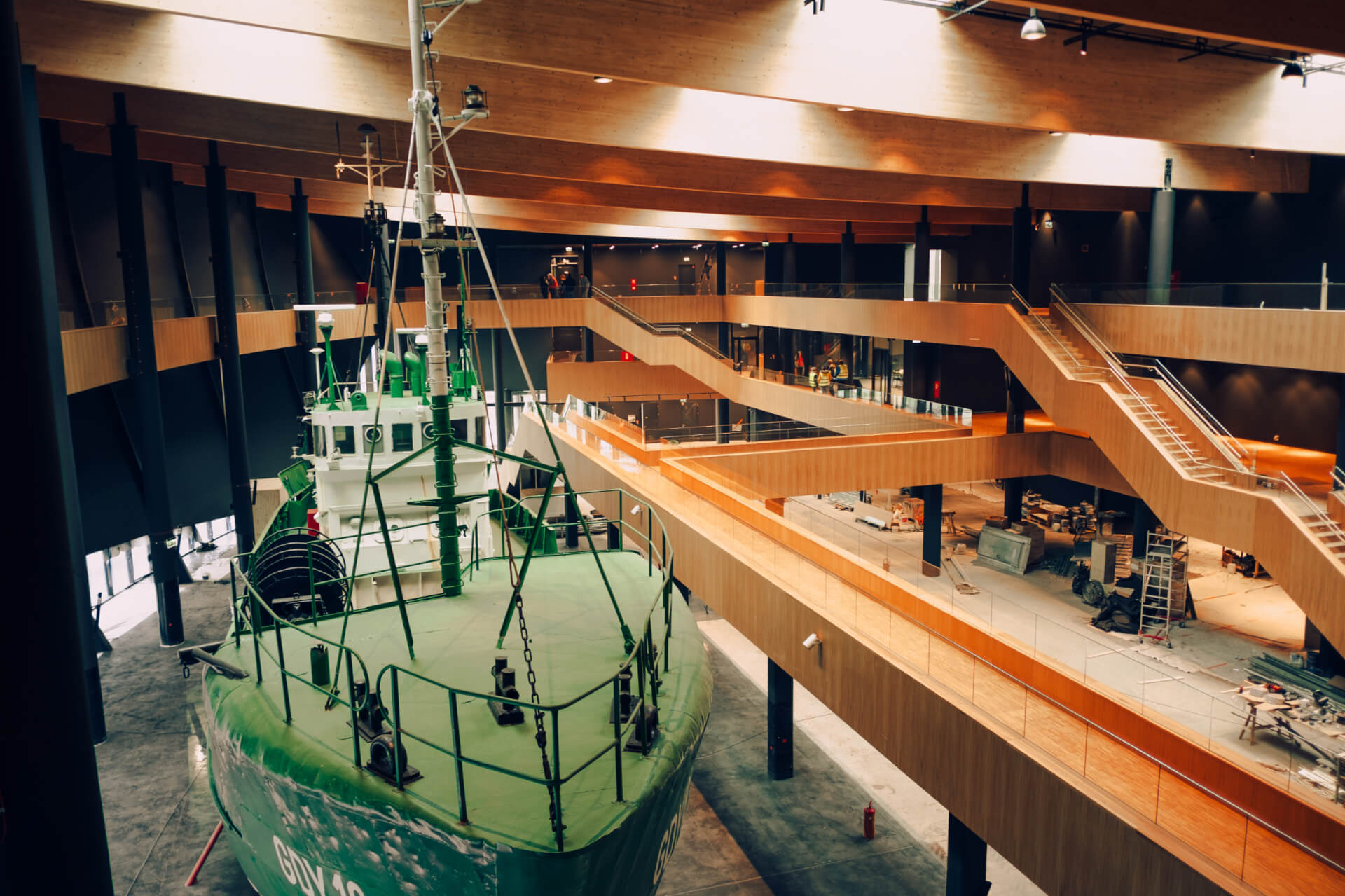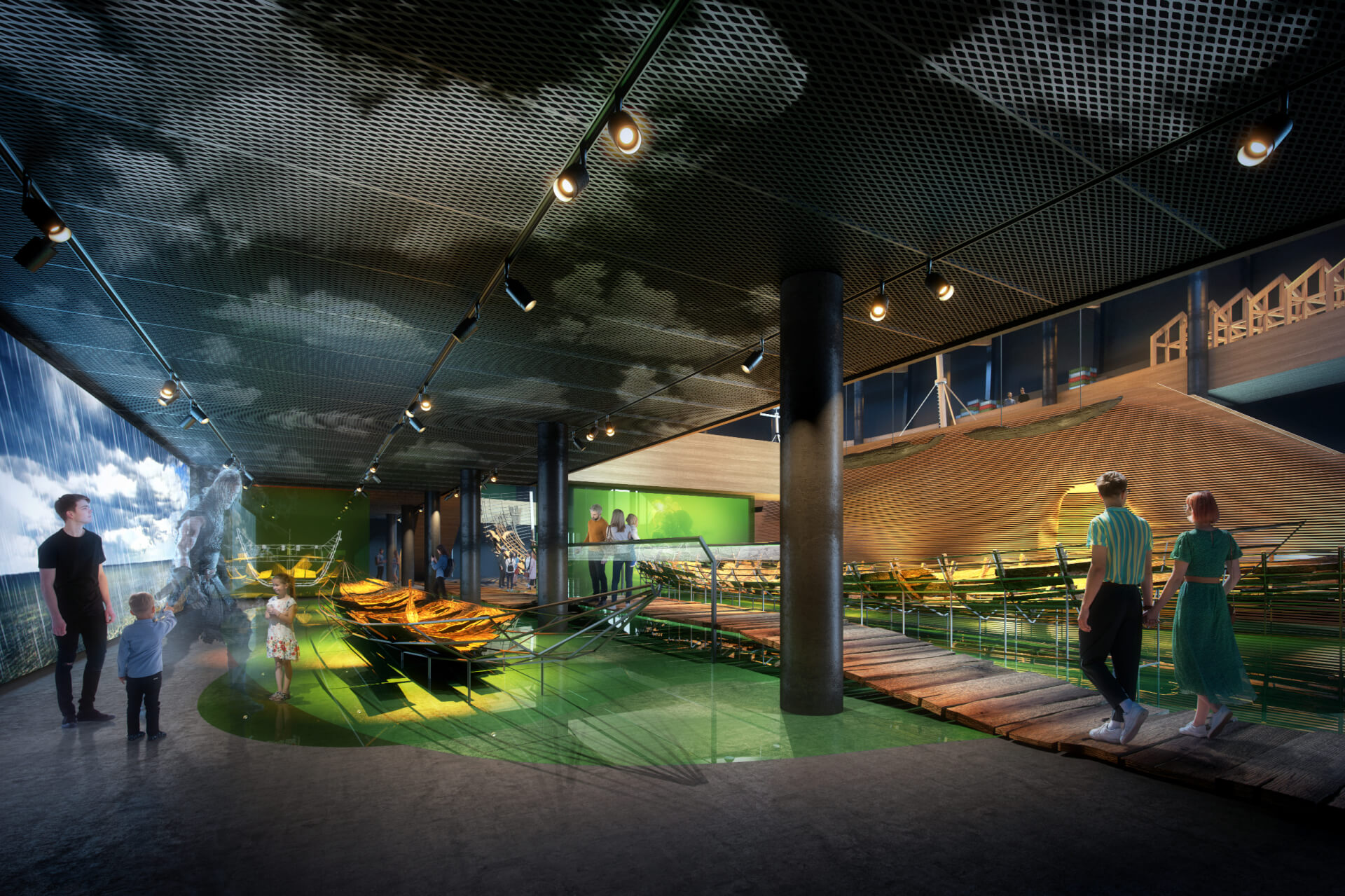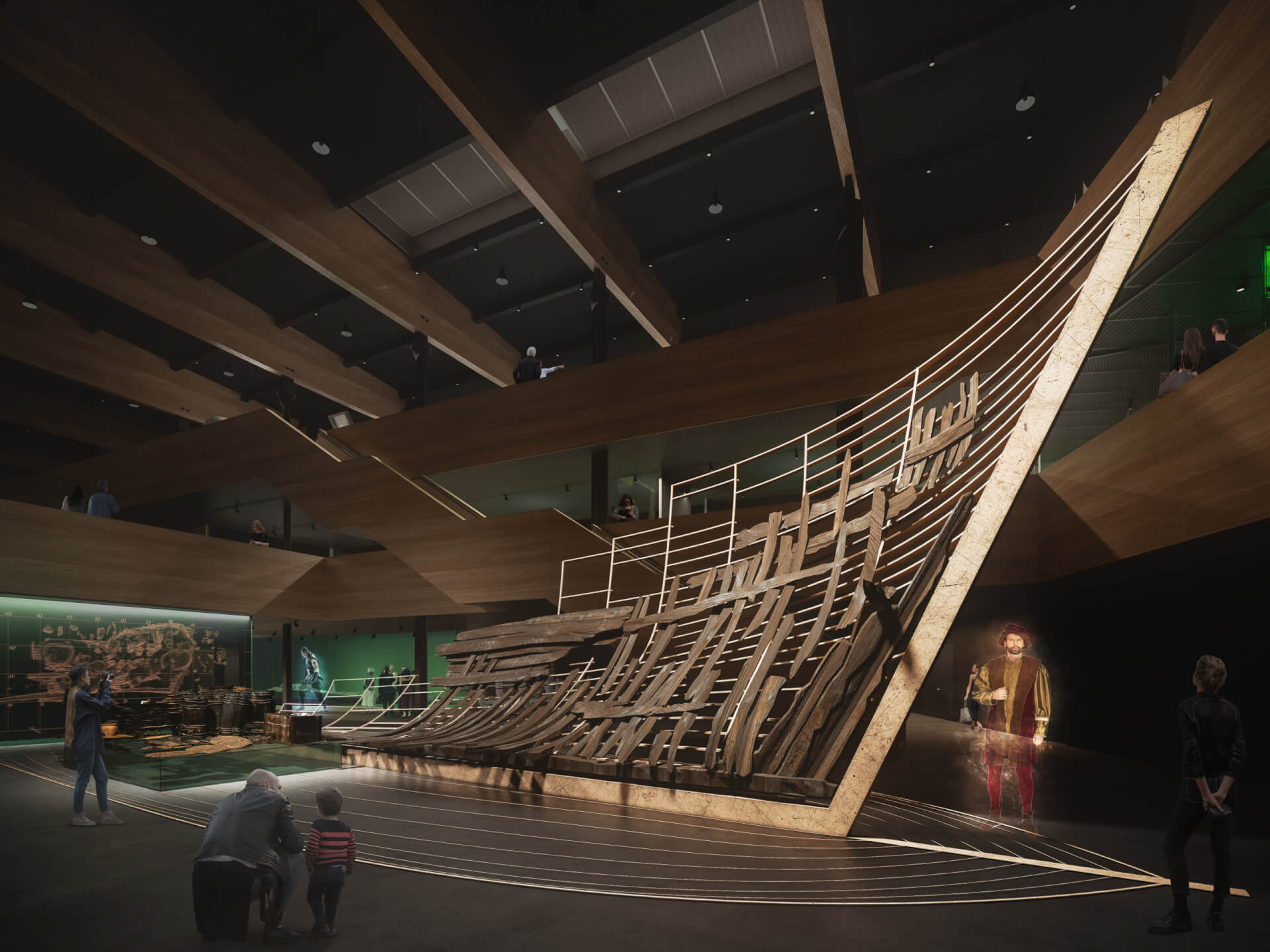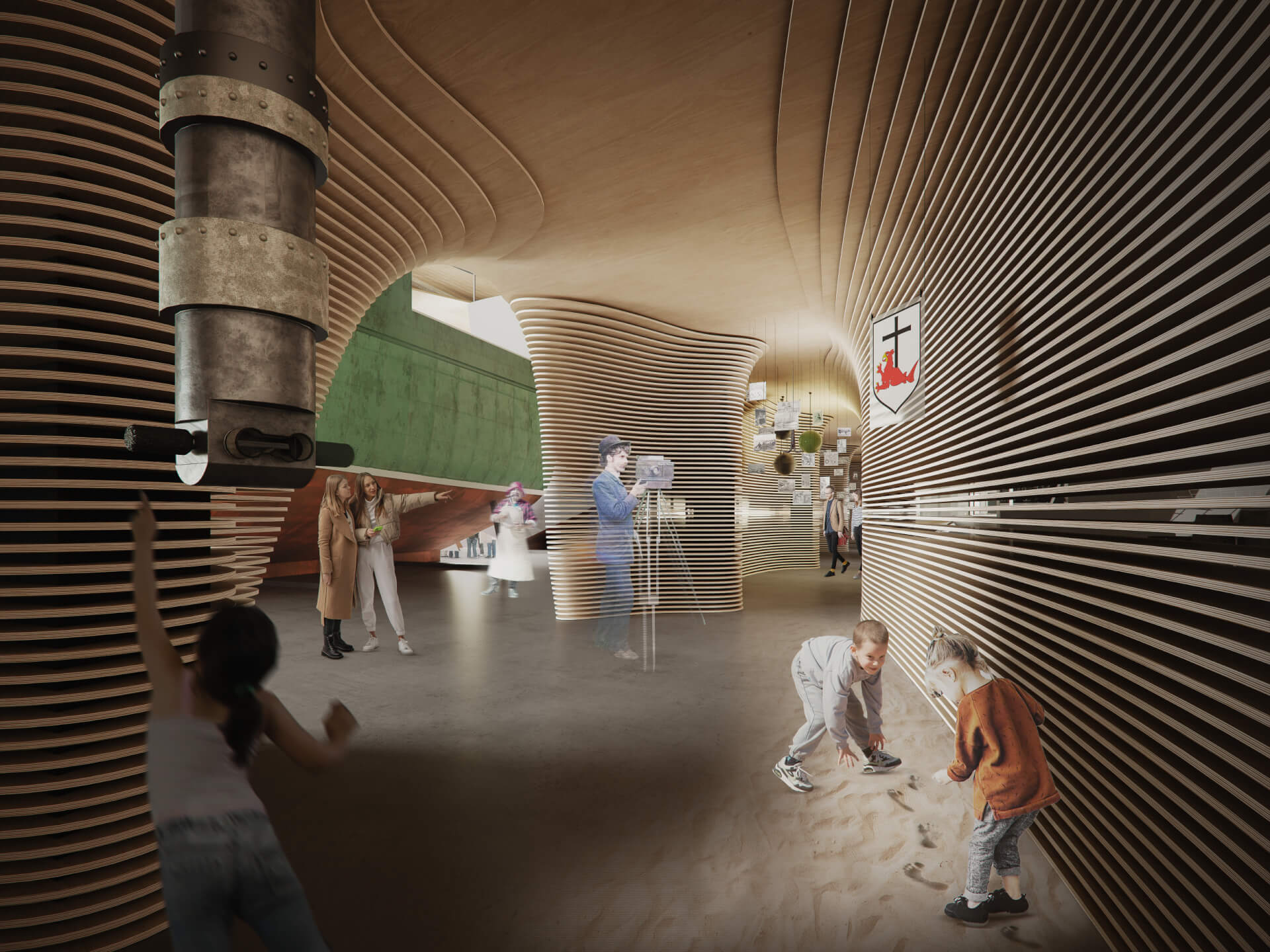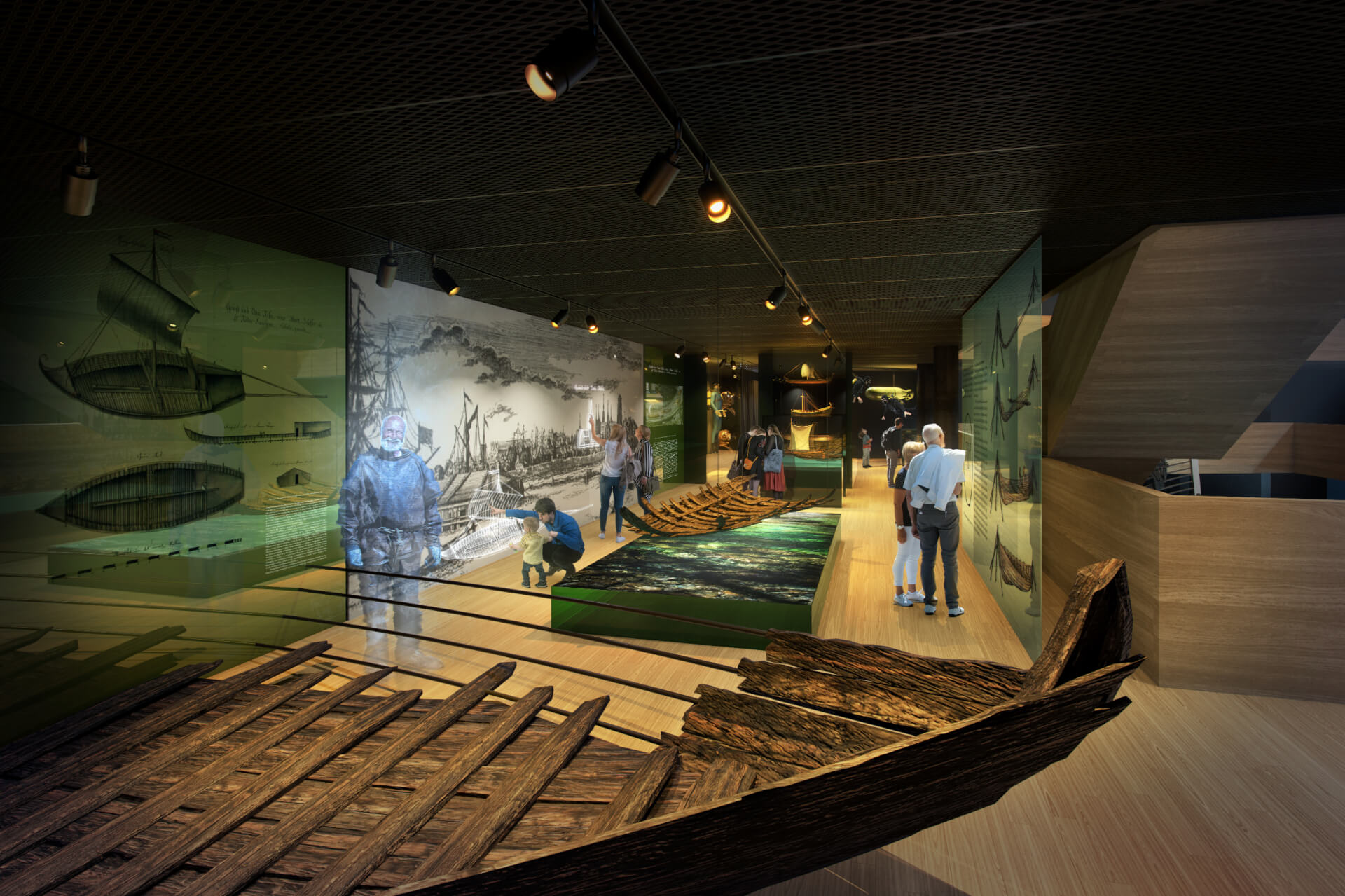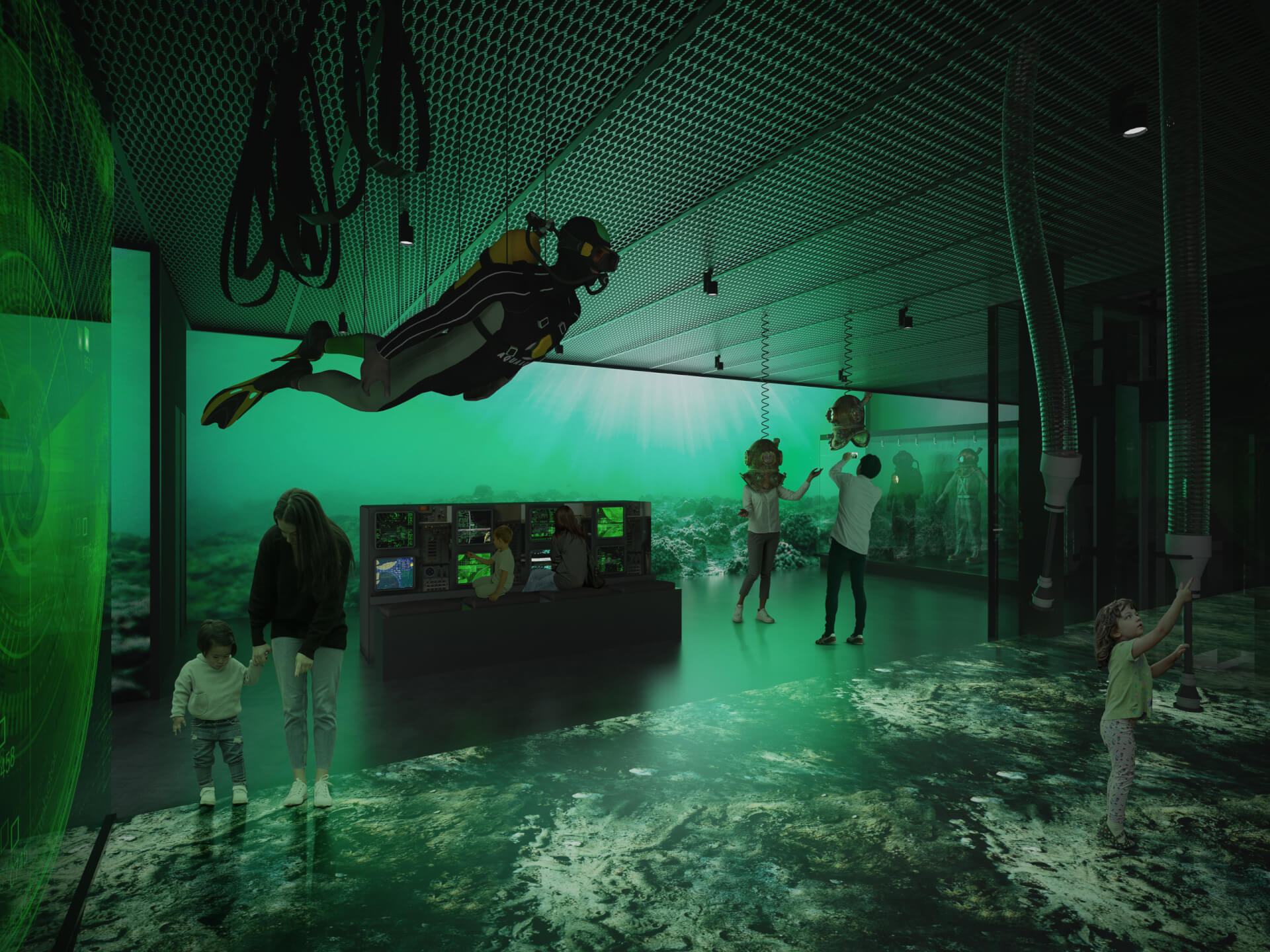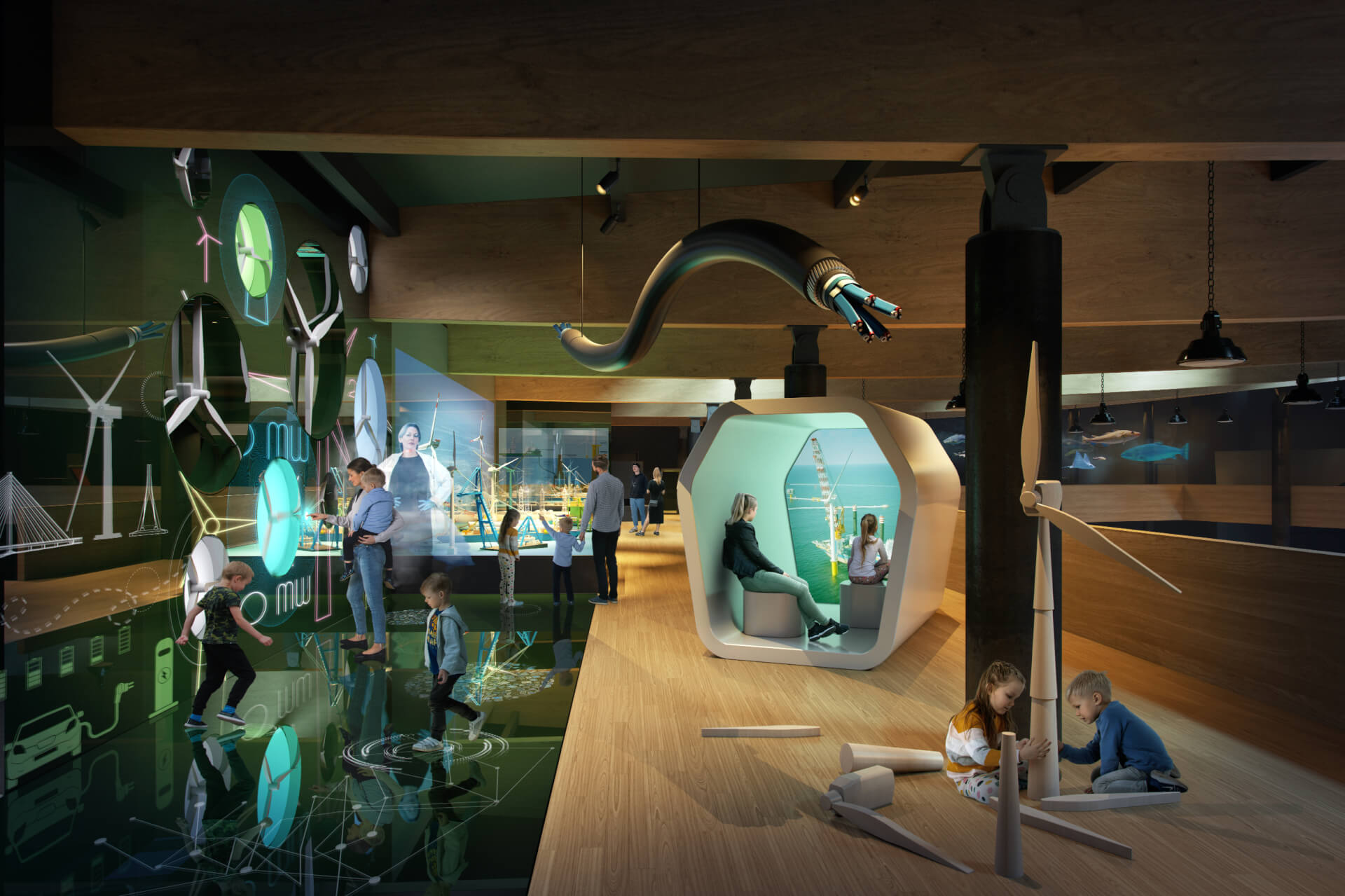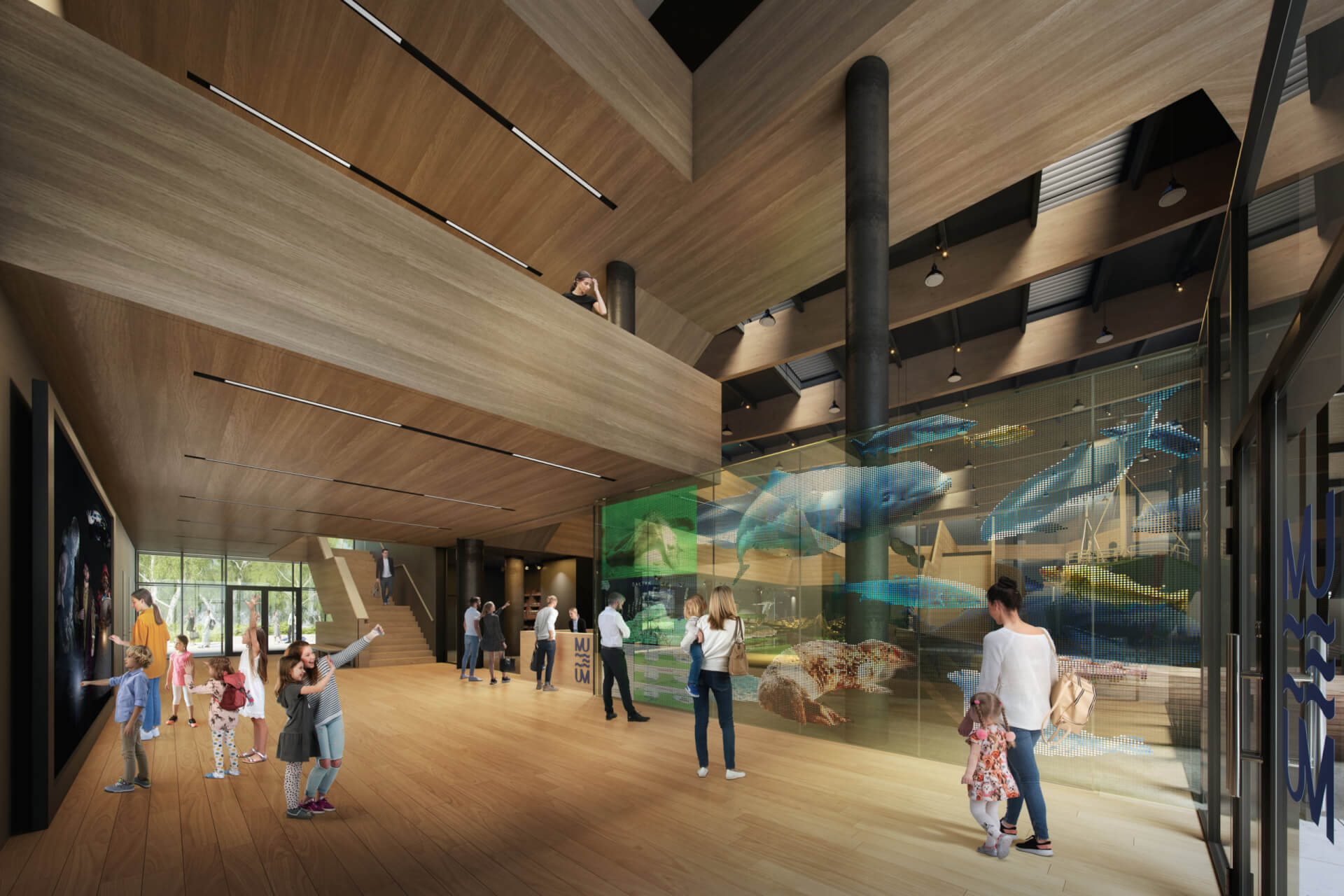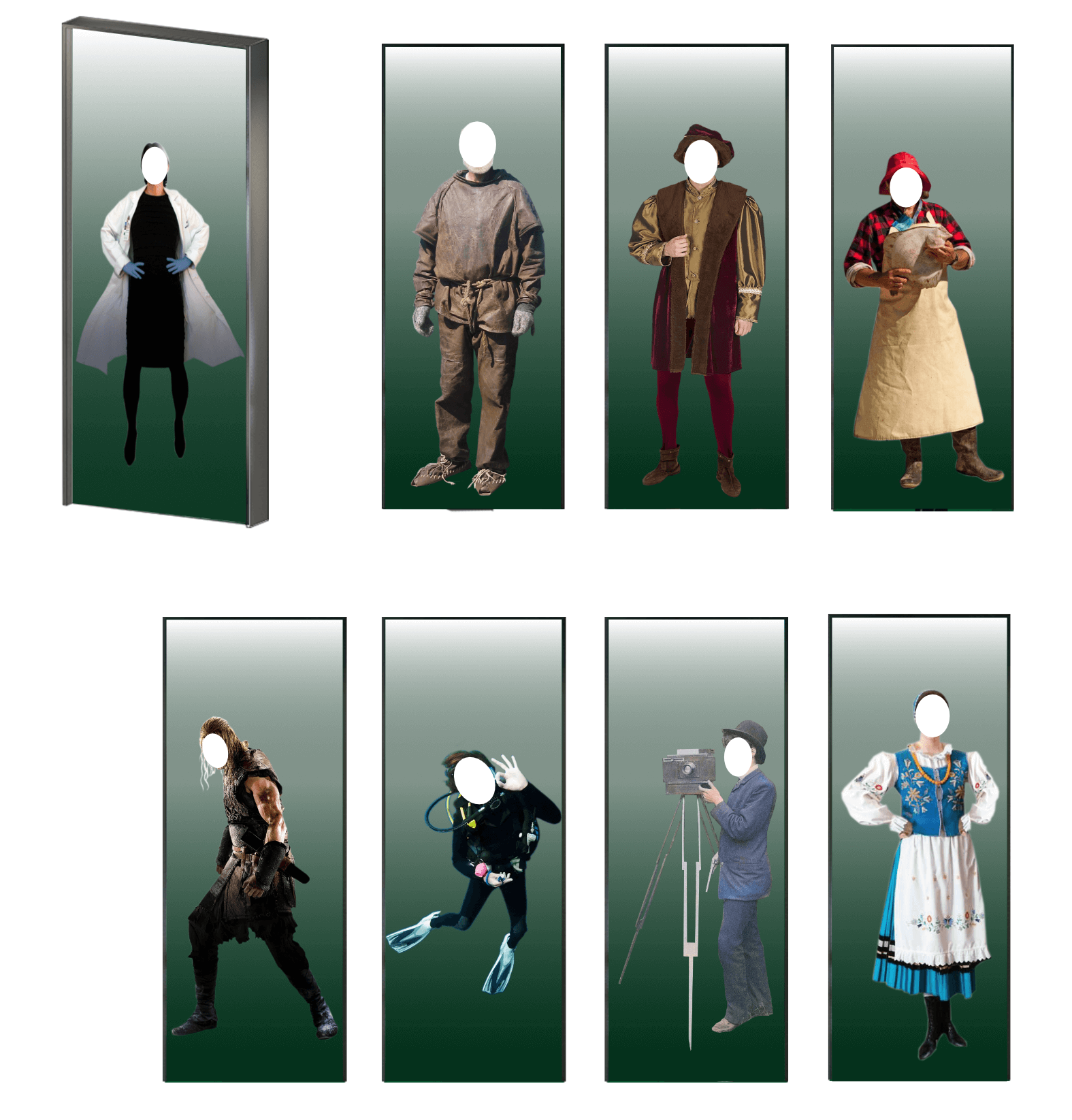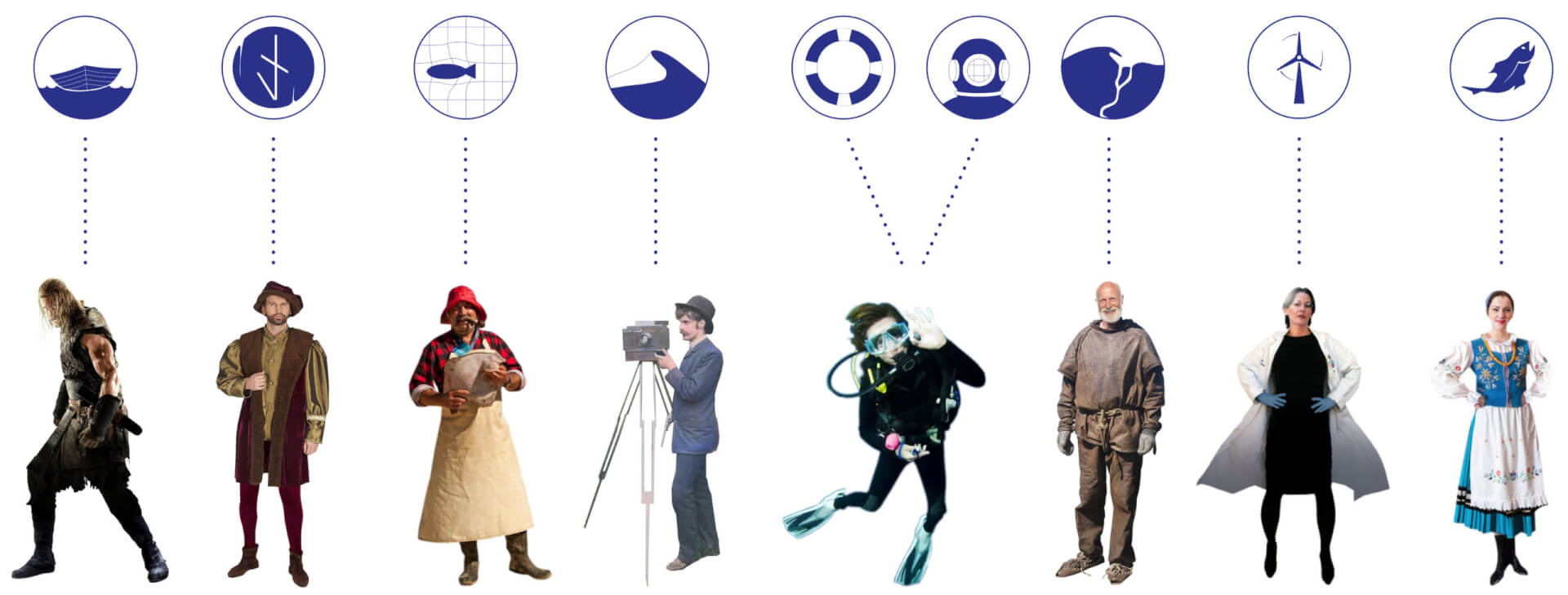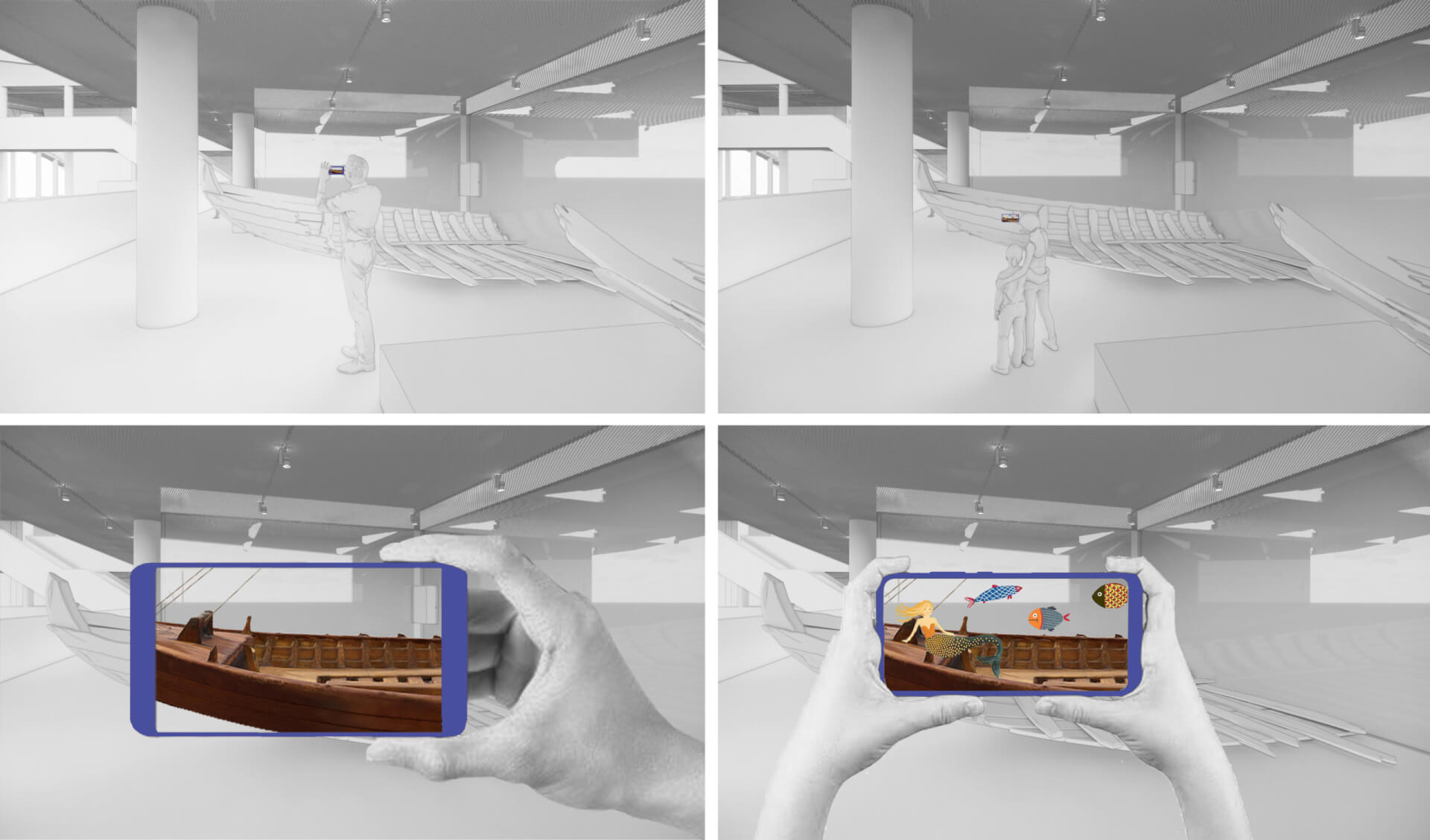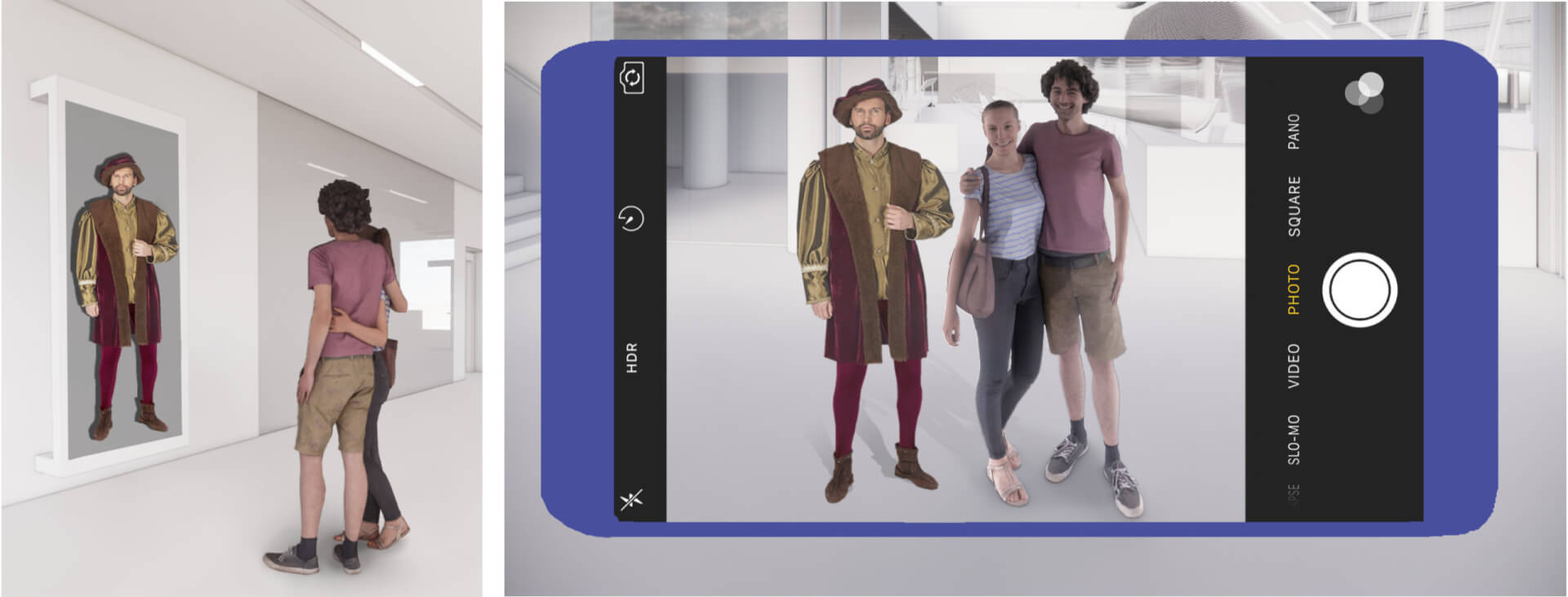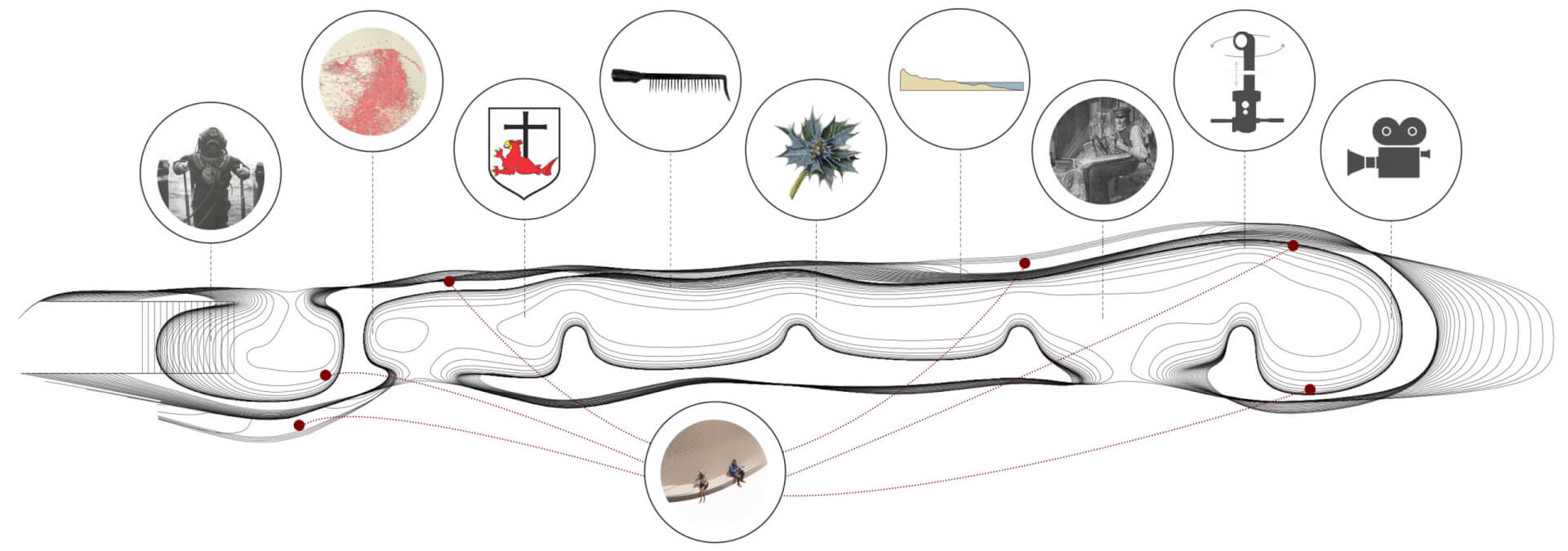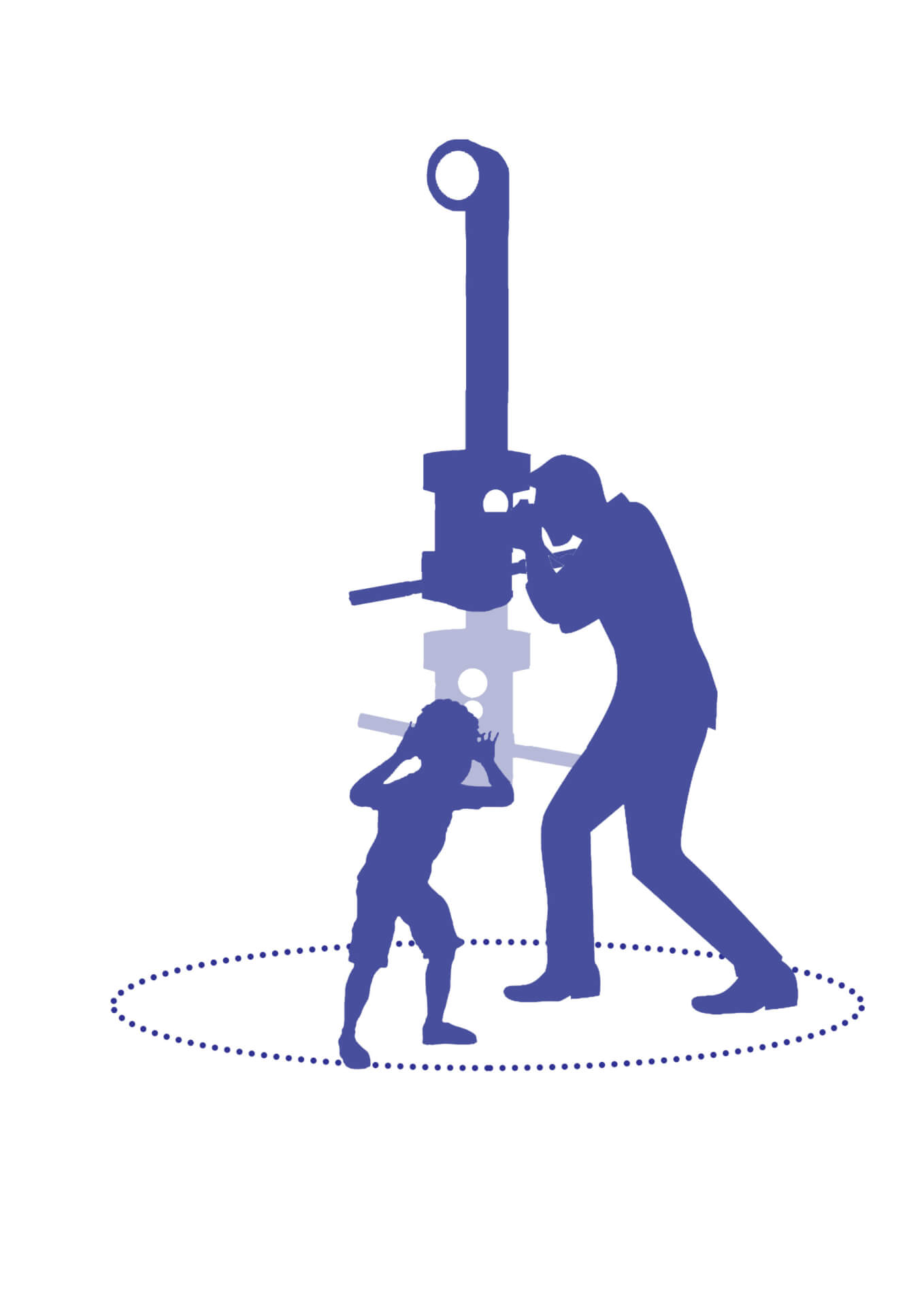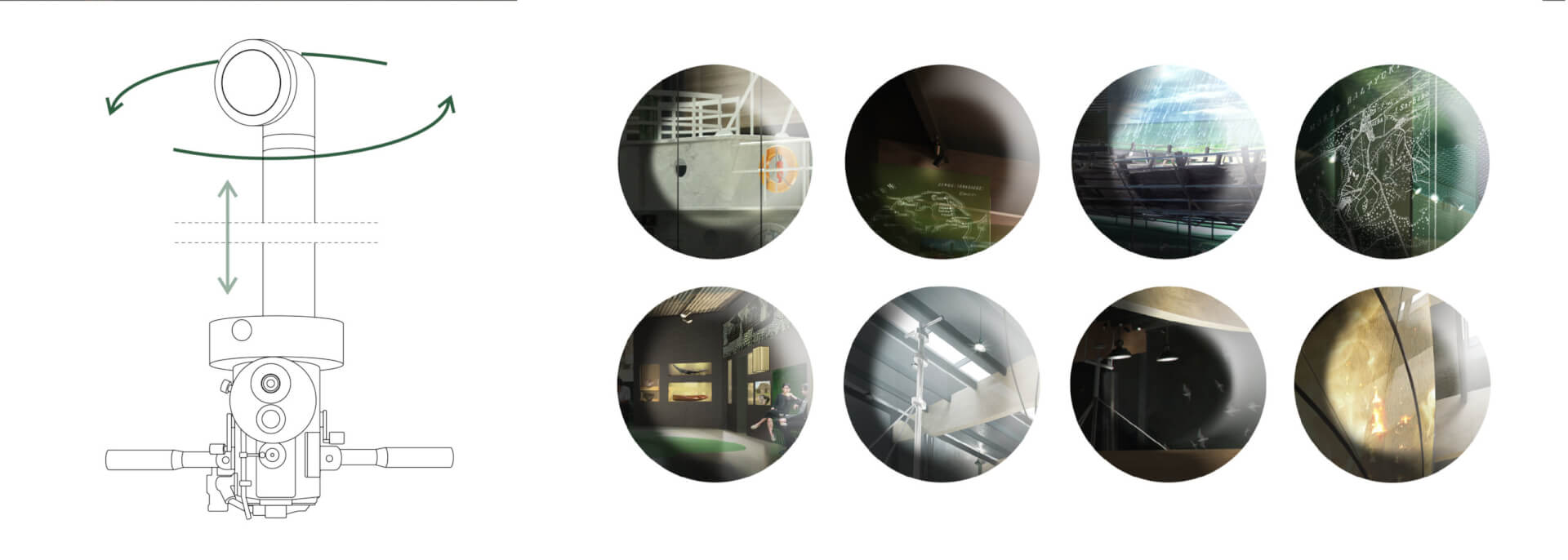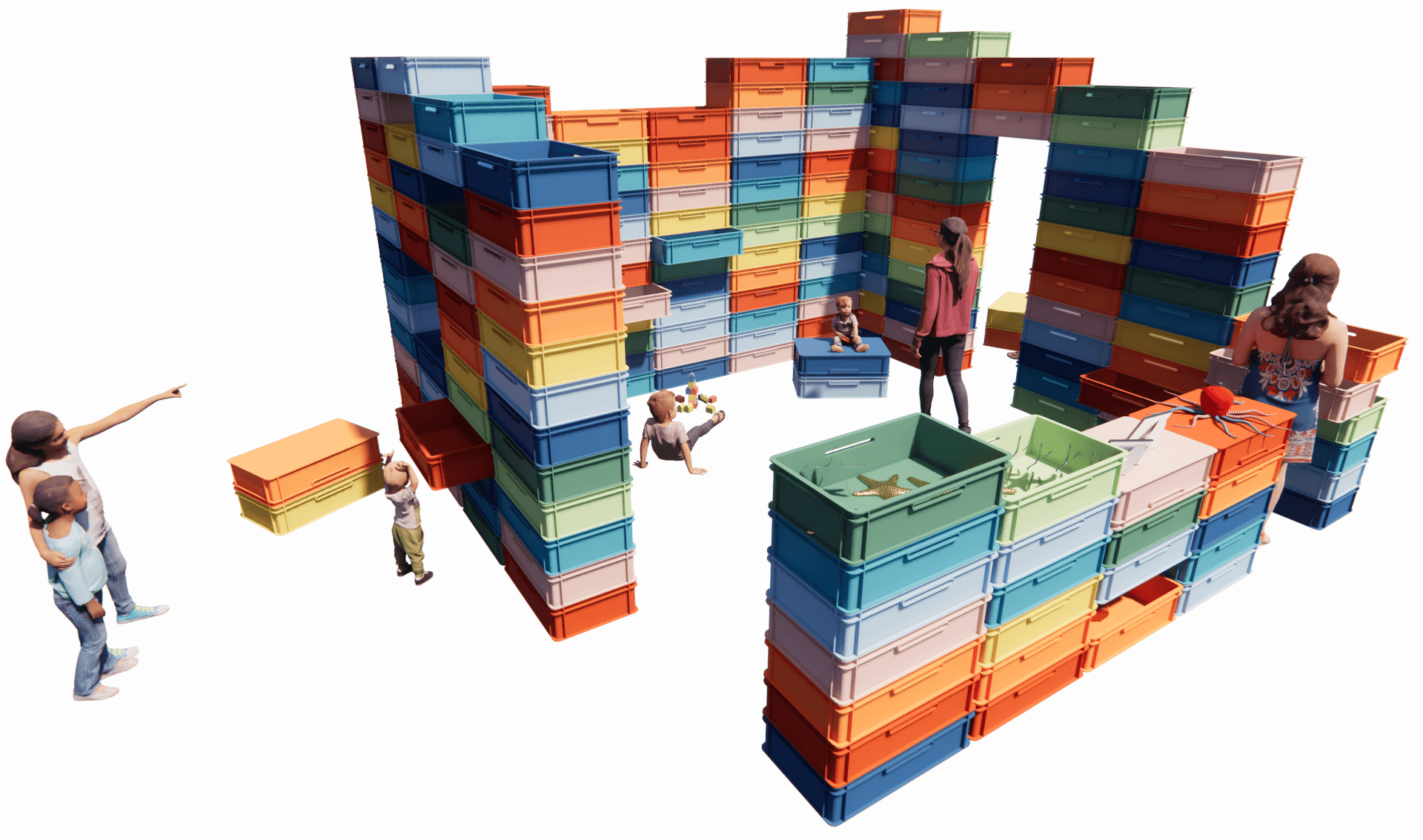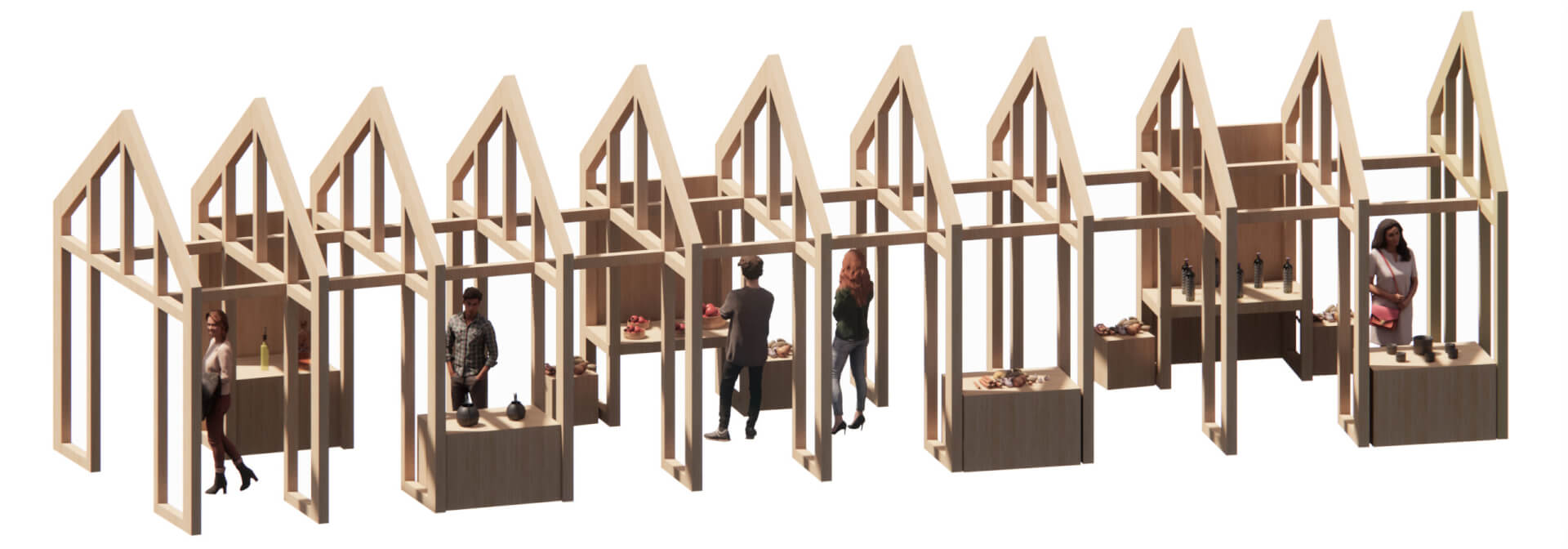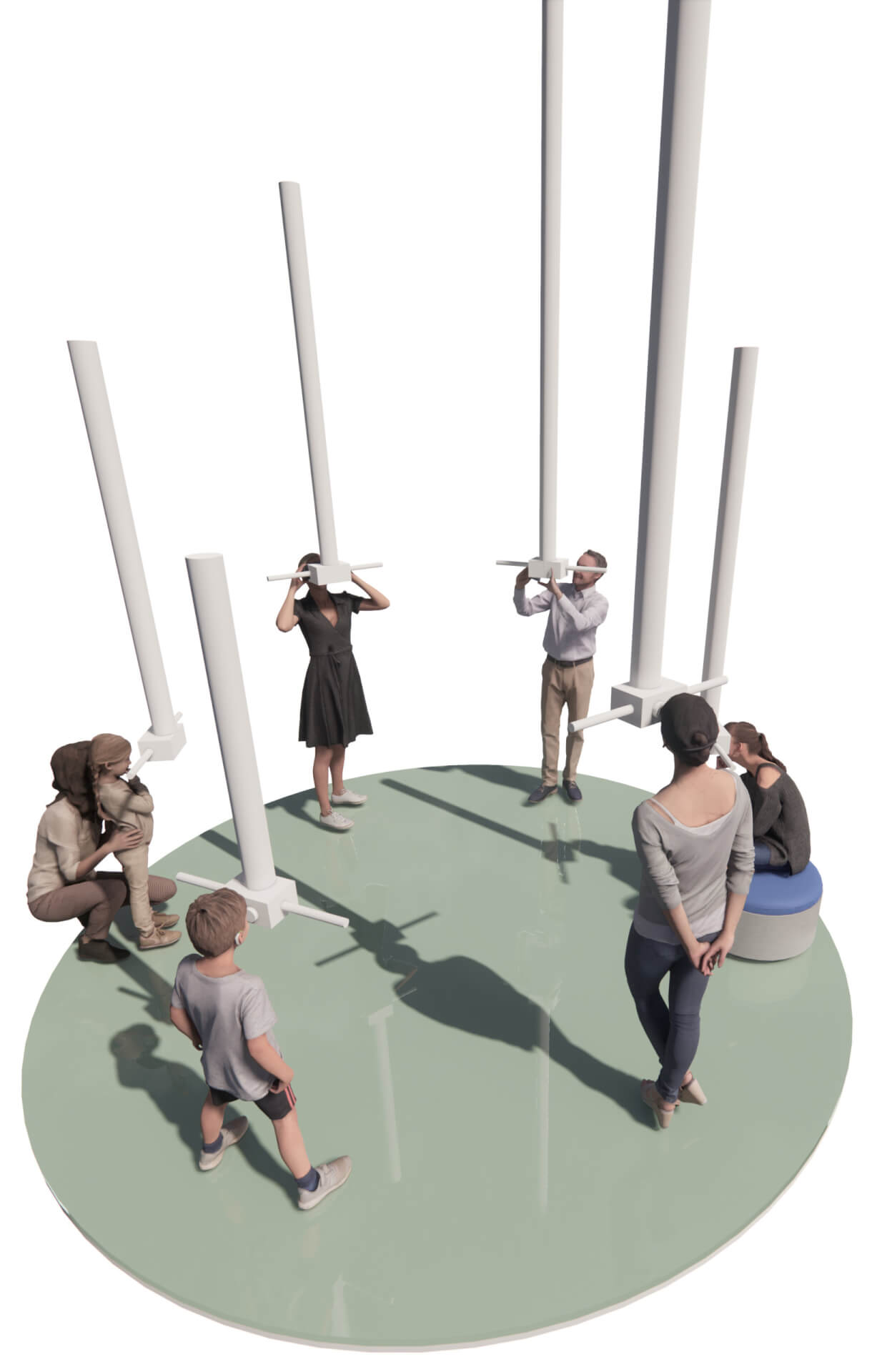maritime museum exhibition
Astonishment, enter the maritime museum. Immediately upon entering the main hall, we are drawn to fascinating displays. On the right, a creeping seal catches the eye, as does a shrieking seagull and a school of herring passing us by from time to time. These dynamic images make the stationary part of the display somehow lighter and more approachable. The static objects tell the story of the Baltic Sea and are an integral part of the exhibits. Without a doubt, the cod and the flounder moving past, do not evoke the wonder that does a group of bizarre characters calling to us from a screen to our left. A motley group these are. Every one of them, from a different time. Be it the medieval merchant or the fisherman, each more peculiar then the next. Waving, they invite us, arguing over who has the most fascinating story. They don’t keep us waiting either. Some visitors gather around the screen and baffled by what they see, begin talking with our motley bunch. They really talk with them! A burly Slav from the Viking times engages in a dialogue as though he were here and now! The display is based on artificial intelligence, also used in deepfakes. It evokes emotions, marvels, changes moods and surprises. All of it, on purpose. It engages practically all our senses. The museum is full of energy and vitality.
Slavic Boatbuilding and Sailing During the Viking Era. The gallery opens with a fierce, red-blooded stallion of a man; strong as an oak, long-haired and broad-shouldered Johannus the Slav. Wearing a studded leather kaftan and brandishing a javelin, an ax and a bow, he kills with a mere glance… This warrior evokes fear and dread. From the fury of the Slavs, spare us oh Lord – warned the chronicles of the time. Our John is no mere Johnny. He could have been a warrior – a savage pirate and plunderer. He fights Vikings and he fears none. He is their equal. This character, a man as vital as he is inscrutable, one who instills dread and horror, is also undoubtedly a master sailor and ship builder. Fierce Johannus is only the first adventurer in our panoply of protagonists. A winding path guides us through the oldest exhibits in the museum. The graphic symbol of this route is a flat-bottomed ship.
In the first part of the exhibit, we pass through a mystifying, green-bottled landscape. We then realize that the Vikings had adversaries who indeed were their equals. They rivaled them in shipbuilding and each drew on the feats of the other. For many, this will be quite a surprise. This is a moody and mystifying part of the exhibition. It features a dark color palette, alternating with deep shades of green, an allusion to the depths of the Baltic Sea.
The focal point of this sector consists of three boats, resting upon delicate black steel frames. Vessels moored in a recreated fragment of a seaside harbor, hovering lightly over virescent depths with a mirror-like sheen. The floor alters its texture and color, transforming into a natural element of the backdrop – the Baltic comes alive.
For the more physically inclined, a rowing simulator is placed in an adjacent alcove. Here, we can travel back in time to experience a galley such as those used by medieval Slavs. Thanks to an encircling projection, an elaborate soundtrack and the need for physical exertion, the simulator will provide a taste of the hardship endured by medieval rowers. A warning: The tempo set by the other rowers will not be easy to keep up with. This is not for the faint of heart!
Sailing and Trade in the Baltic, 1200 – 1800 A.D. Led by childlike curiosity, we head in the direction of spacious glass panes – a filter transmitting marine greenness of seafaring surroundings. A space of multiple superimposed arrangements gives a sense of the deep, as we explore yet another vessel among those shipwrecked below.
From the abyss, another character grips our attention, standing at the end of the pier, with shimmering clouds projected behind him. He is our guide – a merchant whose vessel Miedziowiec (the copper ship), along with its cargo, now rest at the bottom of the Baltic Sea. His name may have been Johann or Johan Pilge, though we cannot be sure. His ship, which he was almost certainly part owner of, carried several times the volume of its contemporaries. A man like this was known by many names. The symbol of this part of the exhibition is a mark found on barrels carried by medieval ships.
Miedziowiec is undoubtedly the centerpiece of this part of the exhibition. The height of this space is practically limitless and the exhibit may be staged in a rather theatrical way. The light in this scene focuses on the shipwreck while the rest of the exhibit fades away. Our protagonist stands in the center, while his silhouette blends into a subtle reflection of himself drafted on the ground. The reflection has been woven with copper thread giving the exhibit its proper rank. We are clearly witnessing something extraordinary here. The warmly colored, light, steel frame encompasses fragments of the hull, keel and stern. As in the shipwreck, these components break and fade. However, the ship’s form is clear enough that, in our mind’s eye, we can see the soft curve of the hull and picture its sheer scale. The salvaged cargo is laid out on a sea-green display – barrels, wood, ceramics, trunks, and of course, sheets of copper. Hence the name of our hero.
Those who install the museum’s app will be able to point their phone camera at the exhibit and see the entirety of this famous shipwreck through their phone. They will be able to see many pieces which are not part of the exhibit itself.
The rest of the exhibit is half-hidden, only partially lit, and seem to fade away. The space is moody, mysterious, and somehow incomplete. When skillfully illuminated however, each item is extraordinary and compelling.
Evolution of the Hel Peninsula and the Bay of Puck. Having learned and experienced a great deal, we take a respite and sit on a sand dune in the center. Gazing again at Miedziowiec, we want to take a break from all the excitement, yet the landscape’s organically vertical structure doesn’t allow for rest. It cajoles and invites us to continue down its ever fluid way. Running our palm on a seemingly natural surface, we continue on to the next part of the exhibition. A massive B-25 trawler appears to our left. Admiring its shape, we go inside. We are greeted by a photographer from a bygone era. It’s a nature photographer, a lover of seashore views who, along with his tripod, has traversed many a beach and sand dune. He specializes in the Hel Peninsula, the Bay of Puck, and the town of Łeba. It is no surprise that the symbol of this part of the exhibition is the sand dune.
The periscope is the next of many curious attractions. It is likely that the adjustable instrument grabbed our attention earlier on… Its rotating, copper “trunk” is easily visible from every gallery including that of Miedziowiec. With this singular instrument, we can tour the entire museum!
In an alcove just beyond the periscope, tucked into a sand dune, rest comfortable benches where we can sit and view several films about manmade reefs and dunes. Interactive projections are situated throughout the dune exhibit. They include one about sand blown about by the wind. When we walk through it, we leave behind footprints. It is a minor detail but a lot of fun, especially for kids.
Walking through the sand dune, it is as though we are in a cloud of images—maps hanging from strings and photographs suspended from the ceiling. There is something for everyone here, from historical materials about the town of Łeba and its surrounding vegetation, to, of course, sand dunes. Additionally, the area functions as a bookshelf where library cards and various riddles are hidden. There are also drawers not unlike those from a card catalogue, each containing a different riddle or a fun fact about Łeba and its surroundings. It may be a photograph, a seashell, or a poem by a local writer.
Fishing in the Baltic: Issues and History. Exiting the dune exhibit, we encounter a fleeting silhouette set against a supertrawler. It’s a lively, local fisherman. Pipe in hand, he wears a red laminated hat, a colorful plaid shirt, a peculiar pair of knickers, and a characteristic rubber apron with suspenders. He is quite a character. With a raspy voice, he recounts his hair-raising sea outings and tells some local anecdotes. This is our guide through the GDY-18 Supertrawler section, the symbol of which is a fish captured in a net.
A must-see, the museum’s real hit – the B-25 supertrawler, docked inside during the building’s construction. After years of waiting on the Motława River, the boat, facetiously called “The Pickle”, received a new coat of paint and its duly earned glory. We are the only museum in Poland with a real trawler on its premises!
The boat is cut in half, which allows us to see the holding tank, engine, and enclosure. It’s a real treat for children and adults alike. The scale of this space is incredible. It was envisioned with this particular boat in mind and resembles a boat hangar. The space below the second-floor mezzanine is used for displays and exhibits which need not be viewed up close, yet contribute to the overall look. A fishing net hangs over various showcased pieces and the whole thing could be staged as a rotating set. The space is riddled with fishing gear and high poles, with flags blowing in the wind. Along with the trawler, the entirety of the set constitutes a singular image.
Sea Rescue and Maritime Safety. Displays dedicated to sea rescues are situated in front of the walkway, leading out of the sand dune. Due to the adjacent underwater archeological exhibit, we are now surrounded by a dark greenish glow. We slowly descend to an area, the subject of which barely reaches the XIX Century.
A tow truck used to transport rescue boats is the largest part of this exhibit. It is set against large photographs and projected images illustrating sea rescues. Our attention is drawn to the unusual looking “pants” used to transport survivors. It would be interesting to try on this strange looking garment. We suggest replicating this piece and hanging it as if it was a swing set.
Some pieces can be found in a glass showcase with a multimedia screen for viewing photographs and animated images. Another display will include lifesaver rings, belts, life preservers, lifesaver boards, and anchors from rescue boats. Visitors will be able to steer a rudder and operate an RC-1 helm connected to it. A series of model ships placed along a balustrade completes the gallery.
Underwater Archeology. The section on diving and underwater exploration hides in cool, greenish depths augmented by an underwater soundtrack. We can hear the subtle sound of bubbles and the knocking of diving equipment in the underwater abyss. The mood is enigmatic, and the space divided by glass screens of deep shades of green hiding the scenery ahead. As we expect, our guide this time is a diver in an old-style diving helmet. He is also the attendant at the sea rescue section.
We feel drawn to and curious about exploring the depths. One of the fun parts here is the chance to try on a twelve-bolt diving helmet suspended from above. A picture in the helmet is one of the best souvenirs from the museum. Above us, a diver in modern gear submerges in the water in search of his next find. Meanwhile, children are on an underwater treasure hunt, blowing away layers of insects on an interactive floor display. Both ejector pumps in the display are working constantly, while the young explorers remain undeterred. In the background, the depths of the sea are projected onto a wall where sea creatures occasionally appear.
18th Century Shipping in the Vistula River Mouth. Emerging from the depths, we encounter two additional shipwrecks. An interactive wall allows us to explore drawings, descriptions, and blueprints of a large variety of river boats. From a large, brightly-lit, touchscreen display, we can select any image which instantly comes to life and information about the given ship is displayed. Here we learn that the oldest terms used by Slavs to describe ships were of Latin origin—terms such as “nawa” or nave, and the native “korab”, meaning ship. Ship builders were called ship craftsmen, and the term for “boatman” appeared on the Vistula in the 16th Century. It is the reason our guide for this part of the exhibit is a ship craftsman holding a sketch of the Vistula River mouth, the Vistula being the “queen” of Polish rivers.
The wreck brought up from the bottom of the Dead Vistula is very impressive if only because of its size. It sits perpendicular to a green glass wall, where we see source documents of the ship in its prime. The soundtrack features sounds of the river and ship workers.
Offshore Wind Energy. The second-floor gallery is surprisingly stimulating as it features the latest technology among many of its impressive displays. Immediately, our eye catches a highly detailed, forty-foot mock-up of offshore industry. This perspective enables us to observe many of the details. We can see a maritime ship, a diving station for underwater jobs, and, at last, an offshore wind farm with its infrastructure.
An interactive wall and floor setup situated next to the model garners significant interest. This translucent surface attracts crowds of inquisitive kids. With certain body movements, they bring the screen to life. For example, by marching in place and turning, they produce energy which spins a windmill. It is a fun way to learn some difficult scientific concepts. Our guide in this area is a female scientist, a renewable energy specialist with a windmill behind her. There isn’t a question which she cannot answer. Try asking her. Deepfake technology makes this possible. If you don’t know something, try asking an expert.
Fishing Issues in Poland. This section is brought to life by our next guide, a lively Kashubian woman named Sophie. We dare not cross her and we definitely don’t make a mess. It’s the one thing that Sophie can’t stand. There is order every step of the way!
We browse through glass cases containing a variety of items such as buoys, boat fenders, coins, scales, sifting nets, pots, trunks, and more. The Kaiser-Panorama is especially popular, it consists of multiple periscope-like stands in a circular area, set at varying and adjustable heights. Comfy bean bags tempt us to spend some time sitting and looking through stereoscopic images of the olden days.
The glass case stands are augmented with multimedia displays while, in a deepfake, the pestering Kashubian lady tells amusing stories. This adds variety to the seemingly endless details contained in various exhibits, and gives the impression that Sophie is in fact our personal attendant. A vessel from the Szczecin Lagoon guides us along a reef immersed in the sounds of the Vistula River mouth. It leads us to the general subject of fishing in Poland.
One of the more interesting exhibits is the model of the captain’s wheelhouse and the interactive bridge simulator. A video of the ship entering the port is projected on the inner walls. By turning a knob, we can affect a change in weather conditions from calm and sunny to stormy and perilous. The experience is augmented by sounds of the sea, from calm to startling.
A stack of fishing crates sits ahead. In an interactive booth, a colorful info-box contains a wealth of knowledge about various post-1945 ports and harbors. We can sit on fishing crates and quietly scroll through information, games and puzzles on smart tablets.
Some of the crates have been switched out for monitors with films and animated materials. Other crates are empty, while still others contain drawers and cubbyholes. These are good places for those who prefer analog data. “Museum rats” can delight in the smell of paper dust, browse through printed photographs, maps, and descriptions just as they would in a library catalogue.
This part of the exhibit will feature a wall divider with puzzles and riddles. If you don’t solve the puzzle, you don’t get to go on… The divider is a deep wall with openings for hands at various heights, for children and adults. Each black box contains a replica of one of the exhibits—a buoy, a gas lantern, an anchor, a sifting net, and other small items. We can only tell the item by touching it. There is a small screen at every station where we select our answer. If correct, a glass display lights up on a different part of the wall containing the item in question. We have passed the test and can move on.
Making a Living as a Fisherman and Fishing Culture. We return to the hustle and bustle of noisy surroundings—the sound of grease on a hot pan, the hum of people milling about, a child crying because his mother won’t buy him a lemonade. We are at a fisherman’s frying stand. We do not intend to replicate in detail a place which everyone who has been on the Baltic Sea coast is familiar with. We propose a wooden set resembling that of a typical Kashubian tavern. This spacious exhibit has multiple uses. In one place it’s a display panel, in another there are restaurant tables, chests of drawers containing a variety of treasures, and glass display cases for other sundries.
The place where a Kashubian woman feels most at home is the part of the exhibit dedicated to culinary customs. There is a large wooden table, with a monitor in place of the tabletop. The screen shows a video from an angle directly above the heads of those seated at the table. The table has been set for several people, and a some dishes were served. We hear someone scratching his plate. This station allows us to witness a number of scenes including the frying stand, a Christmas dinner, a baptism, and a typical fisherman’s modest dinner. The videos are short but allow us to observe those enjoying the meal. Its’ quite memorable.
Further on, a two-sided showcase houses objects of interest to the amateur deep-sea fisherman. There are numerous photos and videos from fishing outings. The Kashubian woman glances with pity at the collection and soldiers on.
She does take an interest in the next display which has to do with fishing outfits. She is not as interested in the clothes themselves as she is in the virtual fitting rooms. This is an interactive station which resembles a mirror. We stand in front of it and with a motion of the hands we “put on” such things as a fishing coat, a cap, a pair of leather boots, and many other pieces from various time periods. It’s really a lot of fun, though the clothes aren’t exactly attractive, not to mention the footwear.
The Kashubian woman finds several sculptures representing fishing arts and crafts. This section can be continuously expanded or it can feature temporary exhibits. The tour ends with an interactive display with information about other maritime museums on the Baltic coast. Their QR codes allow us to hear a little more about each of them.
 all
all 